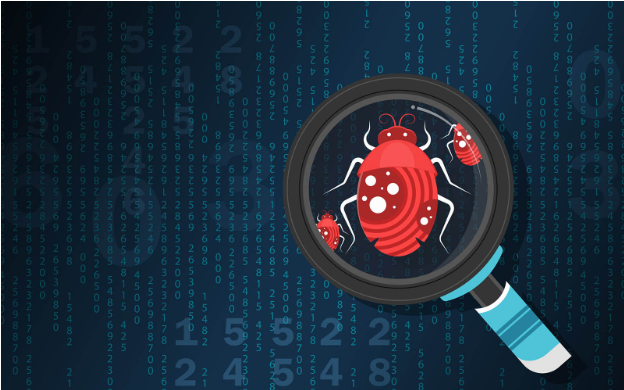
Malware is a ubiquitous threat to computer systems, networks, and the internet. It refers to any software that is designed to harm or exploit a computer system without the user's consent.
Malware comes in various forms, including viruses, worms, Trojans, spyware, adware, ransomware, and rootkits. These malicious programs can cause significant damage to computers, networks, and sensitive information.
To defend against malware, it is essential to understand how it operates and how to detect and remove it. Reverse engineering is a valuable technique for gaining insights into malware's behavior and capabilities.
What is Reverse Engineering?
Reverse engineering is the process of analyzing a product, system, or software to understand how it works and identify its components and design. In the context of malware, reverse engineering involves analyzing the malicious code to understand its behavior, functions, and capabilities. The goal of reverse engineering malware is to identify its purpose, how it infects systems, how it communicates with command and control servers, and how to detect and remove it.
Reverse Engineering Tools
Reverse engineering malware requires specialized tools and techniques. Some of the popular tools for reverse engineering malware include:
Disassemblers:
A disassembler is a tool that converts machine code into human-readable assembly code. It is a crucial tool for understanding the inner workings of malware.
Debuggers:
Debuggers are tools that allow the analysis of the execution of a program. They allow for the observation of the program's runtime behavior and are used to identify program bugs and vulnerabilities.
Decompilers:
A decompiler is a tool that converts machine code into high-level programming languages such as C or C++. It is useful for understanding complex malware that is written in high-level languages.
Memory Dumpers:
A memory dumper is a tool that captures the contents of a program's memory. It is useful for analyzing the state of a running program and identifying potential vulnerabilities.
Sandboxes:
Sandboxes are tools that isolate programs and allow them to run in a controlled environment. They are useful for analyzing malware behavior without risking infection to the host system.
Reverse Engineering Techniques
Reverse engineering malware requires various techniques, including static analysis, dynamic analysis, and behavioral analysis.
Static Analysis: Static analysis involves analyzing the malware code without executing it. This technique involves disassembling the code and analyzing the assembly instructions to understand its behavior. Static analysis helps to identify the malware's entry points, functions, and communication channels.
Dynamic Analysis: Dynamic analysis involves executing the malware in a controlled environment and analyzing its behavior. This technique involves running the malware in a sandbox and observing its interactions with the system. Dynamic analysis helps to identify the malware's capabilities, such as its ability to communicate with remote servers, its persistence mechanism, and its evasion techniques.
Behavioral Analysis: Behavioral analysis involves analyzing the malware's behavior to identify its purpose and capabilities. This technique involves monitoring the malware's activities on a system and recording its behavior. Behavioral analysis helps to identify the malware's actions, such as creating files, modifying the system registry, and communicating with remote servers.
Reverse Engineering Malware
To reverse engineer malware, it is essential to have a thorough understanding of the operating system, programming languages, and assembly code. The following are the steps for reverse engineering malware:
Malware Collection: The first step in reverse engineering malware is to obtain a sample of the malware. Malware samples can be obtained from various sources, including honeypots, malware repositories, and infected systems.
Malware Analysis: Once the malware sample is obtained, the next step is to analyze the malware. Malware analysis involves several techniques, including static analysis, dynamic analysis, and behavioral analysis. The goal of malware analysis is to identify the malware's purpose, how it infects systems, how it communicates with command and control servers, and how to detect and remove it.
Disassembly: Disassembly is the process of converting the malware code into human-readable assembly code. Disassembly helps to identify the malware's functions, entry points, and communication channels. Disassembly can be done using disassemblers such as IDA Pro, OllyDbg, and Hopper.
Function Identification: Once the malware code is disassembled, the next step is to identify the malware's functions. Functions are blocks of code that perform specific tasks. Identifying the malware's functions helps to understand its behavior and capabilities.
Function Analysis: Once the functions are identified, the next step is to analyze the functions. Function analysis involves understanding the function's purpose, inputs, and outputs. Function analysis helps to identify the malware's behavior and capabilities.
Control Flow Analysis: Control flow analysis involves understanding how the malware's code flows. Control flow analysis helps to identify the malware's decision-making mechanisms, such as branching and looping. Control flow analysis helps to identify the malware's behavior and capabilities.
Data Flow Analysis: Data flow analysis involves understanding how the malware's data flows. Data flow analysis helps to identify the malware's data sources, data sinks, and data transformations. Data flow analysis helps to identify the malware's behavior and capabilities.
Malware Modification: Malware modification involves modifying the malware's code to remove its malicious behavior. Malware modification can be done by patching the code or rewriting the code. Malware modification can be useful for creating antivirus signatures and developing defenses against future malware attacks.
Conclusion
Malware is a significant threat to computer systems, networks, and the internet. To defend against malware, it is essential to understand how it operates and how to detect and remove it.
Reverse engineering is a valuable technique for gaining insights into malware's behavior and capabilities. Reverse engineering involves analyzing the malware code using specialized tools and techniques.
Reverse engineering helps to identify the malware's purpose, how it infects systems, how it communicates with command and control servers, and how to detect and remove it. Reverse engineering is a critical technique for developing effective malware defenses and protecting computer systems and networks from malicious attacks.




